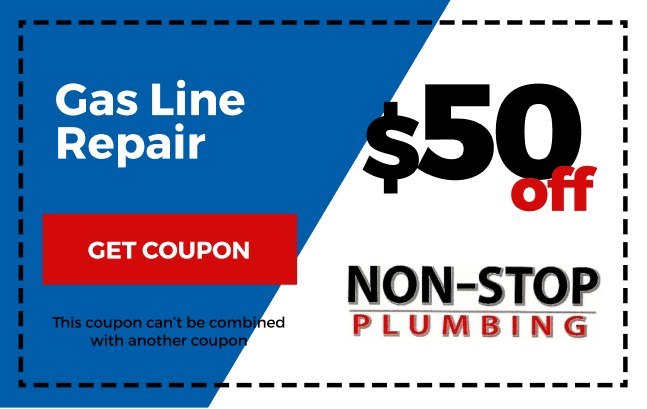Plumbing issues can be frustrating and time-consuming, not to mention costly if you have to call a professional plumber to come to your home to fix the problem. However, there are many DIY plumbing repairs that you can do at home with just a few basic tools and a little bit of know-how. In this article, we’ll go over some common plumbing problems and provide step-by-step instructions for how to fix them yourself.
Fixing a Leaky Faucet
A leaky faucet is not only annoying, but it can also waste a lot of water over time. Fortunately, fixing a leaky faucet is usually a straightforward process. Here are the steps you can follow:
- Turn off the water supply to the faucet.
- Remove the handle by unscrewing it and taking it off.
- Use a wrench to remove the packing nut.
- Remove the stem and the washer.
- Replace the washer with a new one that is the same size.
- Reassemble the faucet and turn the water supply back on.
Clearing a Clogged Drain
Clogged drains are a common plumbing problem, and they can be caused by a variety of things, such as hair, food particles, and soap scum. Here’s how you can clear a clogged drain:
- Try using a plunger to dislodge the clog.
- If the plunger doesn’t work, try using a plumbing snake to remove the clog.
- If neither the plunger nor the plumbing snake works, you can try using a chemical drain cleaner, but be sure to follow the instructions carefully and use gloves and eye protection.
Fixing a Running Toilet
A running toilet can be wasteful and expensive, as it can waste a lot of water over time. Here’s how you can fix a running toilet:
- Remove the lid from the toilet tank.
- Check the flapper to make sure it is sealing properly.
- If the flapper is not sealing properly, try cleaning it or replacing it with a new one.
- Check the chain that connects the flapper to the flush handle. If it is too long, it can prevent the flapper from sealing properly.
- Adjust the chain as needed.
Fixing a Slow-Running Drain
If your drain is draining slowly, it could be due to a buildup of hair, soap scum, or other debris. Here’s how you can fix a slow-running drain:
- Try using a plunger to dislodge the clog.
- If the plunger doesn’t work, try using a plumbing snake to remove the clog.
- If neither the plunger nor the plumbing snake works, you can try using a chemical drain cleaner, but be sure to follow the instructions carefully and use gloves and eye protection.
Fixing a Dripping Showerhead
A dripping showerhead is not only annoying, but it can also waste a lot of water over time. Here’s how you can fix a dripping showerhead:
- Turn off the water supply to the shower.
- Remove the showerhead from the shower arm.
- Clean the showerhead by soaking it in a mixture of equal parts vinegar and water for several hours.
- Replace any damaged or worn parts, such as the rubber O-ring or the gasket.
- Reassemble the showerhead and turn the water supply back on.
Fixing a Leaking Pipe
If you have a leaking pipe, it’s important to fix it as soon as possible to prevent water damage to your home. Here’s how you can fix a leaking pipe:
- Turn off the water supply to the pipe.
- Use a pipe cutter to cut out the damaged section of the pipe.
- Measure the length of the new section of pipe needed and cut it to size.
- Use compression fittings to connect the new section of pipe to the existing pipe.
- Tighten the compression fittings securely.
- Turn the water supply back on and check for leaks.
Fixing a Toilet That Won’t Flush
If your toilet won’t flush, it could be due to a variety of issues, such as a clog in the drain or a problem with the flapper or the chain. Here’s how you can fix a toilet that won’t flush:
- Check the flapper to make sure it is sealing properly.
- If the flapper is not sealing properly, try cleaning it or replacing it with a new one.
- Check the chain that connects the flapper to the flush handle. If it is too long, it can prevent the flapper from sealing properly.
- Adjust the chain as needed.
- If the toilet is still not flushing properly, try using a plunger to dislodge any clogs.
Installing a New Faucet
If you want to upgrade your bathroom or kitchen faucet, you can install a new one yourself with just a few basic tools. Here’s how:
- Turn off the water supply to the faucet.
- Remove the old faucet by loosening the nuts that hold it in place.
- Clean the surface where the new faucet will be installed.
- Install the new faucet according to the manufacturer’s instructions.
- Turn the water supply back on and check for leaks.
Fixing a Broken Garbage Disposal
A broken garbage disposal can be a major inconvenience, but you may be able to fix it yourself. Here’s how:
- Turn off the power to the garbage disposal.
- Use a flashlight to look inside the disposal to see if there is any debris or foreign objects stuck inside.
- If there is, use pliers or tongs to remove the debris or object.
- Press the reset button on the bottom of the disposal.
- Turn the power back on and test the disposal.
Fixing Low Water Pressure
If you are experiencing low water pressure in your home, it could be due to a variety of issues, such as a clogged aerator or a leaky pipe. Here’s how you can fix low water pressure:
- Check the aerator on your faucet to see if it is clogged with debris.
- Clean the aerator by soaking it in a mixture of equal parts vinegar and water for several hours.
- If the aerator is still clogged, replace it with a new one.
- Check the water pressure gauge on your water pump to see if it is set correctly.
- If the gauge is not set correctly, adjust it as needed.
Conclusion
DIY plumbing repairs can be a great way to save money and time. With just a few basic tools and some know-how, you can fix many common plumbing issues yourself. However, it’s important to know your limits and when it’s best to call in a professional plumber.























